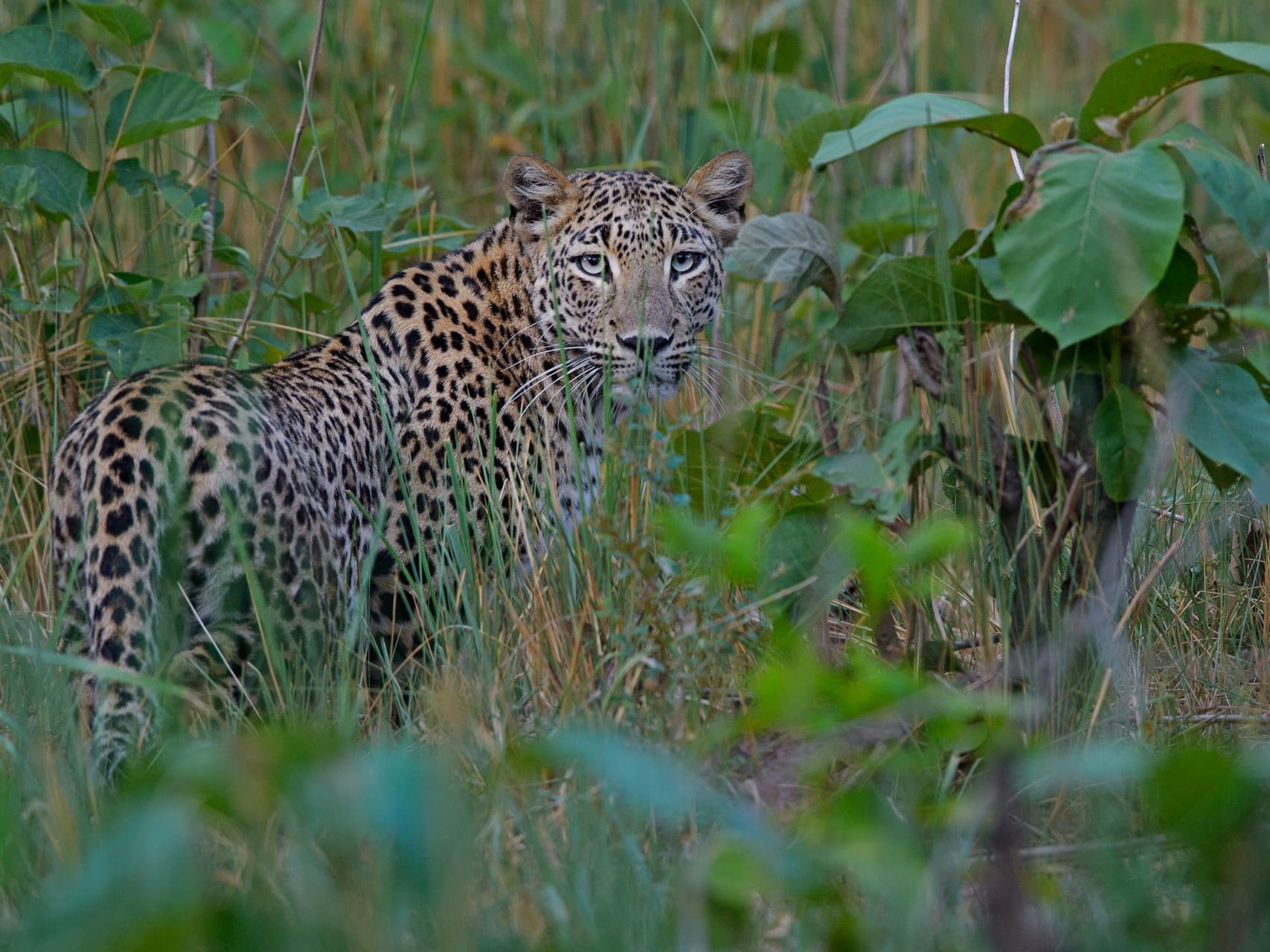 Listen to this article
•
15:34 min
Listen to this article
•
15:34 min
Uttarakhand state in northern India is flanked by the Himalayas and has almost 45 per cent of its geographical area covered by dense forests. Human-leopard interaction is a huge problem in the state. Since the year 2000, over 500 people have lost their lives because of this conflict in the region.
Fragmentation of habitats due to developmental projects, the increasing human populations in towns and rural areas, and wildlife corridors now becoming human habitations are some reasons for this conflict, says Dharam Singh Meena, Additional Secretary of Forest and Environment, Uttarakhand.
To mitigate human-leopard conflict, forest department officials took a leaf out of a successful model from Maharashtra’s Sanjay Gandhi National Park. “They tried to bring people onto their side,” says Dhananjai Mohan, principal chief conservator of forest, Uttarakhand. After consultations with forest officials, NGOs, field officers, and villagers from affected areas of Pauri, Tehri, and Almora (the three most conflict-prone districts), Mohan and his team decided to visit Maharashtra. They were looking at a paradigm shift in dealing with a very old, well-documented problem written about by the hunter-conservationist Jim Corbett. “This was 100 years ago, and the problem continues till today,” says Mohan, who betted on this programme and took a bunch of initially sceptical villagers to Maharashtra for a weeklong exposure visit. “They said that if it can work here, then it is worth a try in Uttarakhand also, and that is how it all began.”
The “Living with Leopards” programme named “Guldar ki Dagdiya” (stay of leopards) in Uttarakhand is a behavioural change programme implemented to reduce incidents of human-leopard conflict. It was rolled out in Tehri and Pauri in 2016-17 and later in the Narendranagar forest division. “You can’t tell the leopard to change its behaviour, so we humans need to change our behaviour to keep ourselves safe,” says Sanjay Sondhi of the NGO, Titli Trust.

Cover photo: The leopard population in Uttarakhand’s Rajaji National Park is rising. The rise is possibly due to the absence of a more dominant co-predator. Photo: Dhritiman Mukherjee
The programme aims to stop or reduce the capture of leopards. It also aims to change the response mechanism of the forest department from reactive to proactive by involving all stakeholders in a sensitisation and awareness campaign.
Sondhi recollects the first time he met a forest guard and asked him how he dealt with such conflicts. “He showed me one lathi saying ‘hamare pass to yehi hain’”. To improve upon the situation, a Rapid Response Team (RRT) equipped with protective gear such as helmets, shields, vests, tranquilising guns, and special cutters, was created. In case of any conflict, members of the Quick Response Team (QRT), constituting volunteers from villages, inform the RRT, which reaches the spot quickly to control the situation.
Diksha Bijlan Bhatt, range officer, Maniknath range (primary centre Devprayag), leads one such team. The team gave a demo of the action in the field with a stuffed tiger. A veterinary doctor accompanies the RRT to assess the condition of the leopard and administer a tranquilliser. Once a dart hits the leopard and the animal falls unconscious, team members quickly gather around to put it in a cage and transport it to the nearest veterinary hospital. The entire drill is carried out smoothly, but such operations are complex in the field. The biggest problem is mob control. “Even we do not know how people will react,” says Bhatt.
Besides rescuing leopards and controlling mobs, the RRT has other tasks, too. In case of leopard sightings: fox lights are installed outside homes to ward off leopards; villagers are told not to allow children to go out alone at night; children are encouraged to go to school in groups. Forest officials also work at busting myths associated with leopards, the most common being leopards are primarily maneaters. At the children’s ambassador programme at the school level, children are selected to go into the community and create awareness through play, skits, and songs.
Dr Koko Rose implemented this programme in 2017 when he was the DFO in Pittoragarh. The programme provides a checklist of things to look for during field visits: solid waste issues, stray animal density, street lighting, vegetation, etc. Rose calls these predisposing factors “just like smoking predisposes a person to cancer”. For example, if there is a solid waste management problem, stray animals (like dogs, cows, pigs) will be there, and leopards will be coming for these animals, increasing the chances of an interface between humans and leopards.
The fear of getting attacked by leopards lurks in the minds of all villagers as they have been dealing with the situation for a very long time. I met local women Sukhde Devi (79) with a slightly stooped frame, Bhavna Bisht (45) and Sumitra Devi (50) at a roadside eatery for an interview. “The population of stray cows is increasing. Leopards come to the villages to eat them,” says Devi. Bisht and Sumitra affirm with nods. These women hail from Lachmoli village in Devprayag, a pristine mountainous area with a cluster of villages and narrow winding roads. In such regions, the way of life is agrarian, and women tend to take care of chores such as fetching water, getting fodder, farming, etc. This makes them more vulnerable to leopard attacks. “We are so scared that we don’t wake up very early in the morning,” says Saraswati Devi, a resident of Jayalghar village. Harish Banwal, sarpanch of the village, in a desperate attempt (after his cow was killed), laced a dead goat with poison to try and get rid of a leopard. The forest department later compensated him for the loss. A few days before I spoke to him, his wife spotted two leopards on their farm. Overall, lack of electricity is a major concern among the villagers, says Saraswati Devi, a resident of Jayalghar village, who complains that no electricity makes it difficult to spot leopards at night.

The impact of this programme has been mostly positive. In Tehri, over the last four years, attacks on humans were reduced to one-fourth of what it was earlier. Typically, over 15 years (2000-2015), Tehri had about 13-14 attacks on humans every year. Once the programme started in 2016-2017, the attacks reduced to 3-4 a year, says Sondhi. The results propelled the forest department to upscale the programme to other regions of Uttarakhand, including Narendranagar division. But in Pauri, it hit a roadblock (between 2017-2018) due to lack of support from local forest officials, says Sondhi. He adds that the programme is kicking off in late 2023 with new enthusiasm under a new DFO.
Sondhi frequently gets one question thrown at him time and again. This is about why leopards seem to target children. He recollects a local community member telling him this: There were eight family members sleeping in a room, including his nine-year-old daughter. The leopard came in, grabbed his daughter, who was the innermost person in the room and carried her out without waking anybody. How and why was it doing that? Sondhi says the man was crying when he asked this question. “The fact is that we don’t know.”
Experts say that there are many things about animal behaviour that we don’t understand. Human-leopard conflict and the study of animal behaviour is still a work in progress.







